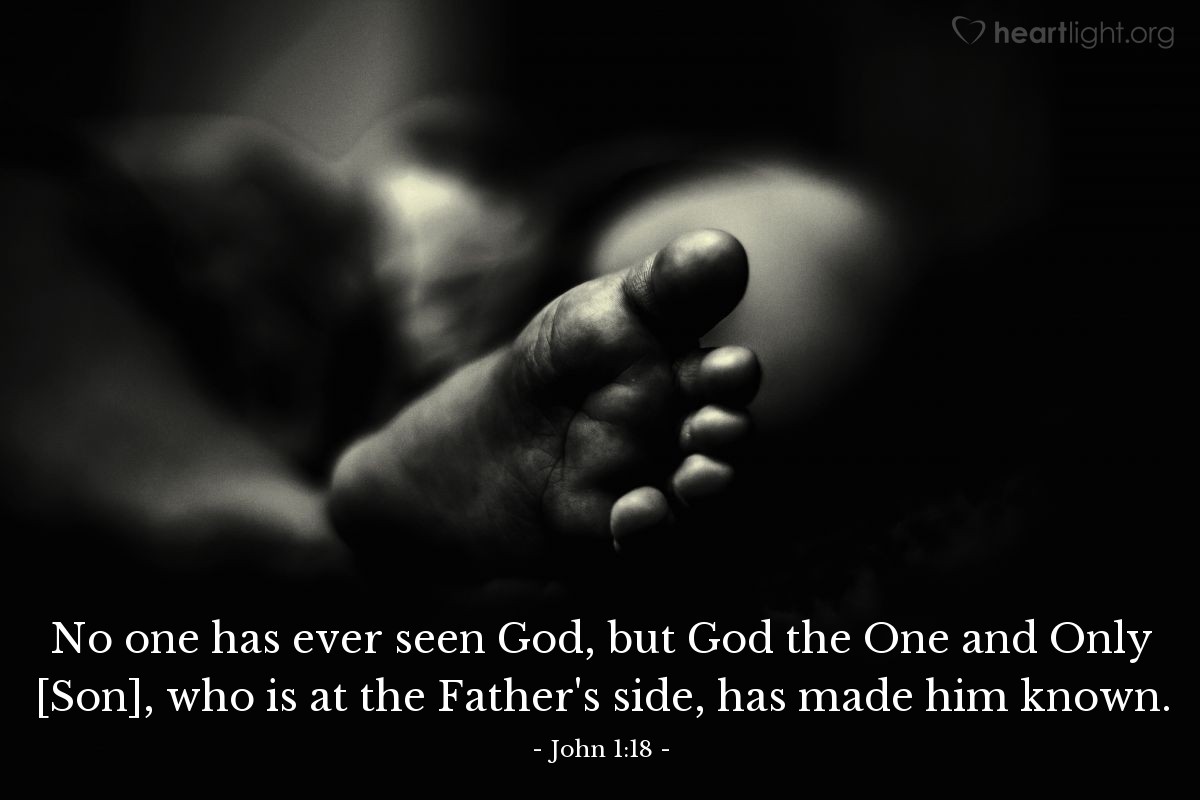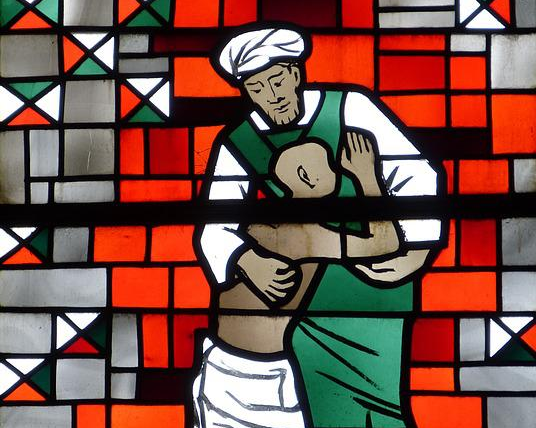GOD BECAME HUMAN
The people of Israel hoped for what seemed the impossible, to look on God’s face. Let your face shine on us and we shall be saved (Ps 80). But God said to Moses: You cannot see my face, for no none may see me and live (Exodus 33:20). The incalculable radiance of the one whose name was I AM would burn people to cinders. Imagine this utter desire for what would annihilate one, like Icarus flying to the sun, or the awful temptation to throw oneself into the air off a cliff, since surely one will fly!
But in the fullness of time, God became human. John tells us: No one has ever seen God. The only Son, God, who is at the Father’s side, has revealed him (John 1:18). This impossible wish was granted in the face of a vulnerable and dependent child. His eyes were closed so that we could look upon him before he gazed on us. In Marilynne Robinson’s novel Gilead, the aged pastor John Ames says, “Any human face is a claim on you, because you can’t help but understand the singularity of it, the courage and loneliness of it. But this is truest of the face of an infant.”
We saw his face, but it was God who died, his eyes closed again on the cross. If we long to see him now, we must cherish what is most vulnerable. John says, “We shall become like him for we shall see him as he is (1 John 3:2). Even now we may begin to be transformed, shedding the armour and the mask, crying out with him, I AM.
Timothy Radcliffe OP.




